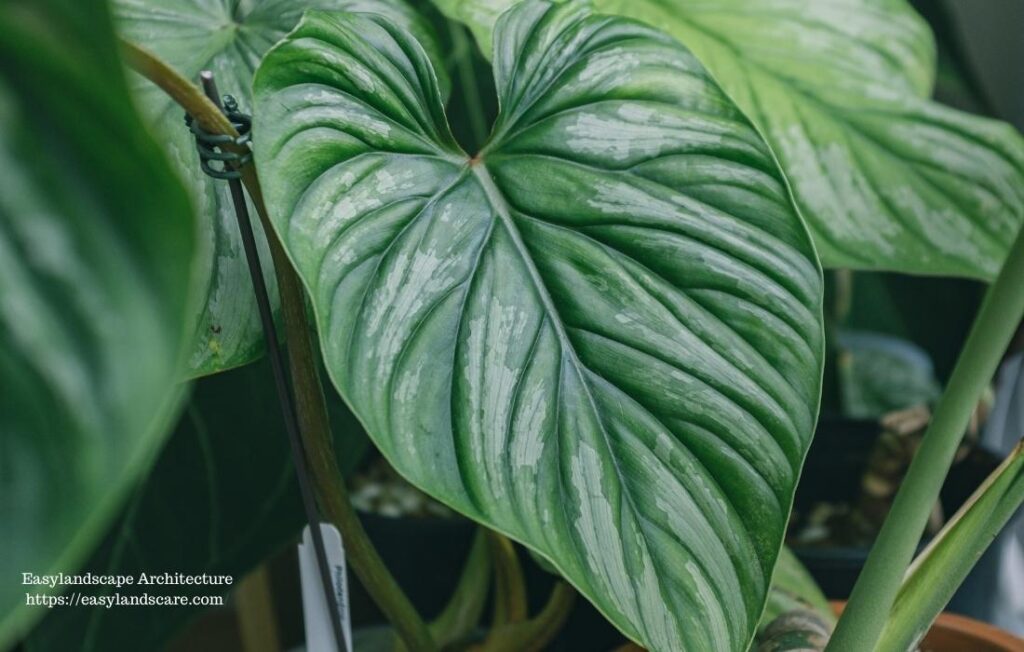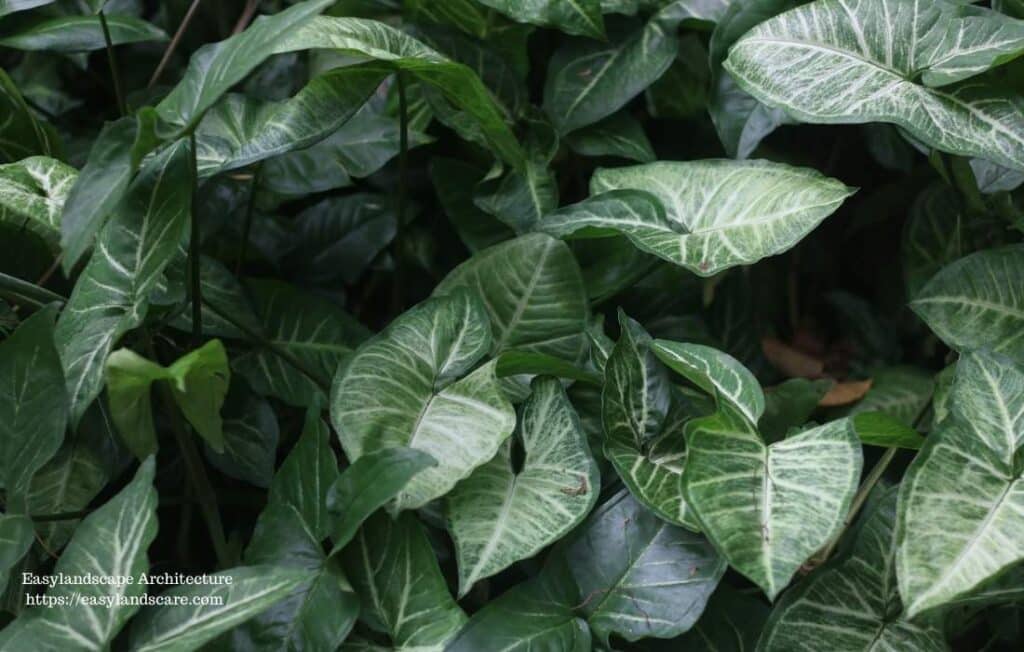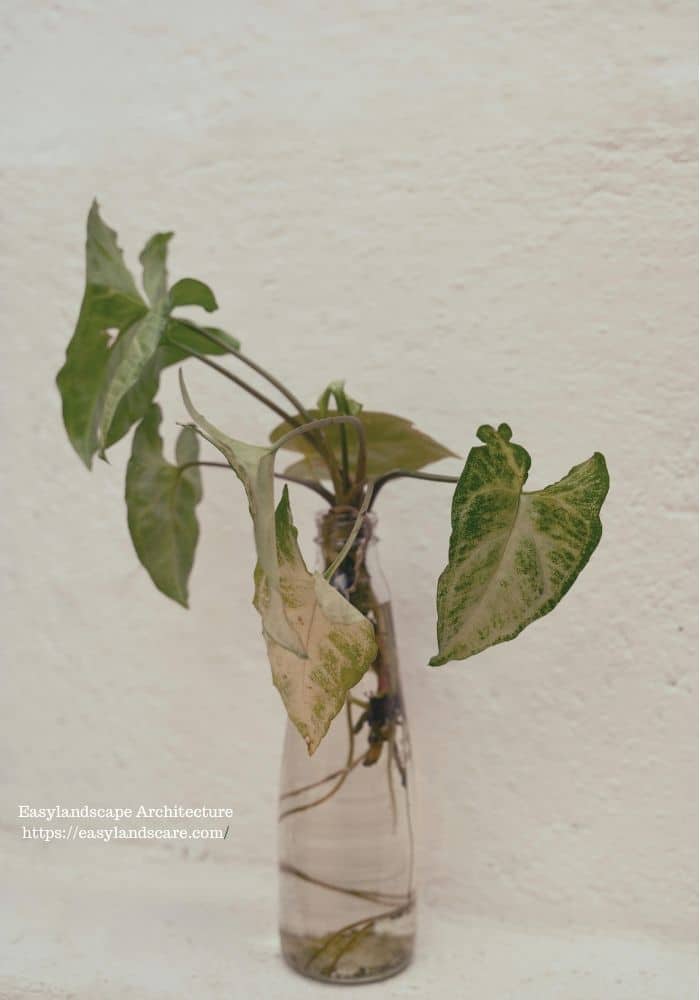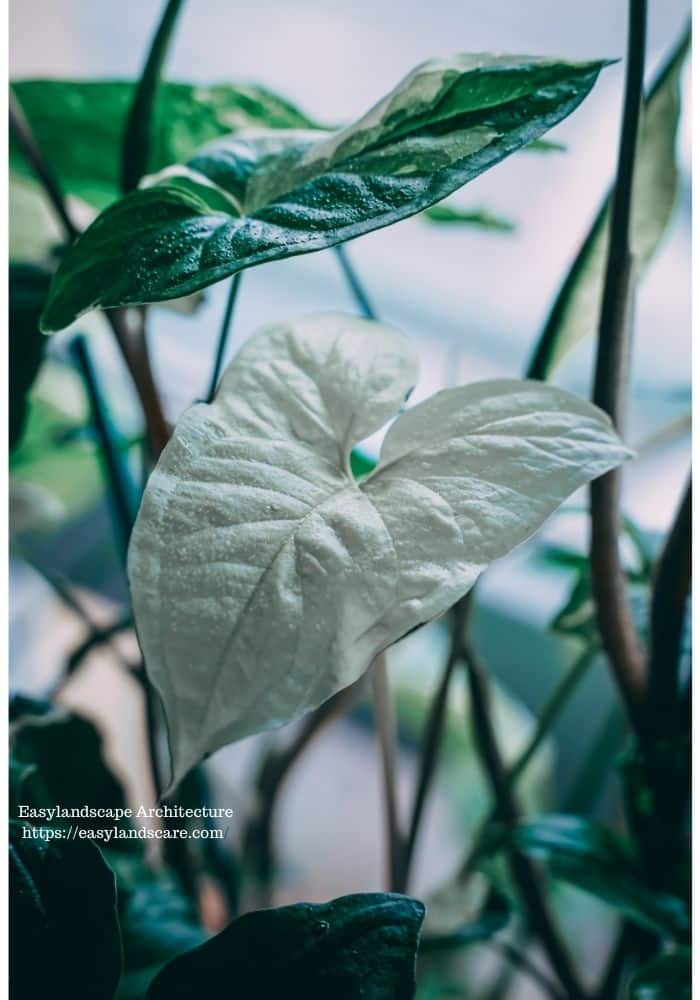Meet the Arrowhead Plant
The Syngonium podophyllum, more commonly known as the Arrowhead plant, Butterfly plant, or Goosefoot plant, is a beloved houseplant cherished for its distinctive foliage that evolves as it matures. With its arrow-shaped leaves that eventually develop lobes, the Arrowhead plant infuses a touch of tropical elegance into any indoor space. Its adaptability and relatively easy care make it a favorite among both novice and experienced plant enthusiasts.

In this detailed guide, we will explore essential aspects of Arrowhead plant care, including light, watering, soil, propagation, and common issues. Our focus keyphrase for this article is “Arrowhead plant care.”
Why Choose an Arrowhead Plant?

Arrowhead plants are visually captivating and offer a dynamic display as their leaf shapes evolve. They come in a variety of cultivars with stunning variegation in shades of green, white, pink, red, and bronze, allowing you to select one that perfectly complements your décor. Beyond their aesthetic appeal, Arrowhead plants are relatively low-maintenance and can thrive in various indoor conditions. Their air-purifying qualities also make them a beneficial addition to your home environment, enhancing both beauty and health.
Essential Tips for Arrowhead Plant Care

Sunlight Requirements
To ensure your Arrowhead plant flourishes, understanding its sunlight needs is crucial:
- Bright, Indirect Light: Arrowhead plants thrive in bright, indirect sunlight. Direct sunlight, especially during the hottest parts of the day, can scorch their delicate leaves.
- East or North-Facing Windows: These locations typically provide the gentle, filtered light that Arrowhead plants prefer.
- West or South-Facing Windows (with Protection): If placing near a west or south-facing window, use sheer curtains to diffuse the intense sunlight.
- Low Light Tolerance: While they prefer bright indirect light, Arrowhead plants can tolerate lower light conditions, though their growth may be slower and their variegation less pronounced.
Watering and Humidity
Proper watering and humidity levels are vital aspects of Arrowhead plant care:
- Consistent Moisture: Arrowhead plants prefer consistently moist but not waterlogged soil. Water when the top inch of soil feels dry to the touch.
- Water Thoroughly: Ensure the water reaches the roots by watering thoroughly until it drains from the bottom of the pot. Discard any excess water in the saucer to prevent root rot.
- Reduce Watering in Winter: During the dormant winter months, reduce the frequency of watering as the plant’s growth slows down.
- High Humidity Preference: Native to tropical rainforests, Arrowhead plants thrive in high humidity. Aim for humidity levels above 50%.
- Increase Humidity: You can increase humidity by:
- Grouping plants together.
- Using a humidifier.
- Placing the pot on a pebble tray filled with water (ensure the pot base is above the water level).
- Misting the leaves regularly with room-temperature water (especially during dry periods).
Temperature In Arrowhead Plant Care
Maintaining the right temperature is another key to successful Arrowhead plant care:
- Ideal Range: Arrowhead plants thrive in average room temperatures between 18-27°C (65-80°F).
- Avoid Cold Drafts: Protect your plant from cold drafts and sudden temperature fluctuations, which can stress the plant and lead to leaf damage.
- Minimum Temperature: Avoid exposing the plant to temperatures below 15°C (60°F).
Soil Requirements
Choosing the right soil is essential for healthy growth:
- Well-Draining Mix: Use a well-draining potting mix that retains some moisture. A mixture of peat moss, perlite, and pine bark works well.
- Aeration: Ensure the soil provides good aeration to prevent the roots from suffocating.
- Repotting: Repot your Arrowhead plant every 1-2 years, or when it outgrows its current container. Choose a pot that is only slightly larger than the previous one. Spring is the best time for repotting.
Fertilizer
Fertilization plays a crucial role in Arrowhead plant care:
- Growing Season Feeding: During the active growing season (spring and summer), feed your Arrowhead plant every 2-4 weeks with a balanced liquid houseplant fertilizer diluted to half the recommended strength.
- Dormant Season Rest: Reduce or stop fertilizing during the fall and winter months when the plant’s growth naturally slows down.
- Avoid Over-Fertilizing: Over-fertilizing can lead to salt buildup in the soil, which can burn the roots and damage the plant.
Pruning
Pruning is an effective way to maintain your plant’s health and appearance:
- Encourage Bushier Growth: Pinching back the growing tips of the stems will encourage the plant to become bushier and more compact.
- Remove Yellow or Brown Leaves: Regularly remove any yellowing, browning, or dead leaves to maintain the plant’s health and appearance.
- Control Size and Shape: Pruning can also be done to control the size and shape of your Arrowhead plant, especially if it starts to become leggy.
Arrowhead Plant Propagation
Arrowhead plants are relatively easy to propagate through stem cuttings:
Stem Cuttings in Water:
- Select a healthy stem with at least one node (the point where a leaf grows).
- Cut the stem just below a node.
- Remove the lower leaves, leaving a few at the top.
- Place the cutting in a jar of water, ensuring at least one node is submerged.
- Place the jar in a warm, bright location (avoid direct sunlight).
- Roots should begin to form within a few weeks.
- Once the roots are about 1-2 inches long, carefully pot the cutting in well-draining soil.
- Keep the soil consistently moist for the first few weeks as the new plant establishes.
Stem Cuttings in Soil:
- Take a stem cutting as described above.
- Dip the cut end in rooting hormone (optional but can speed up the process).
- Plant the cutting directly into moist, well-draining potting mix.
- Cover the pot with a plastic bag or place it in a propagator to create a humid environment.
- Keep the soil consistently moist and place in a warm, bright location (indirect light).
- Once new growth appears, the cutting has likely rooted.
Common Issues and Troubleshooting in Arrowhead Plant Care

Even with the best care, you might encounter some common issues:
- Yellowing Leaves:
- Overwatering: This is a common cause. Allow the soil to dry out slightly between waterings. Ensure good drainage.
- Underwatering: If the soil is consistently dry, increase watering frequency.
- Nutrient Deficiency: Consider fertilizing during the growing season.
- Old Age: Older leaves naturally turn yellow and can be removed.
- Brown, Crispy Leaf Edges:
- Low Humidity: Increase humidity levels.
- Underwatering: Ensure consistent moisture.
- Salt Buildup from Fertilizer: Flush the soil with water occasionally.
- Direct Sunlight: Move the plant to a location with indirect light.

- Drooping Leaves:
- Underwatering: Water thoroughly.
- Overwatering: Check for root rot and adjust watering habits.
- Cold Temperatures or Drafts: Move the plant to a warmer, sheltered location.
- Leggy Growth (long stems with few leaves):
- Insufficient Light: Move the plant to a brighter location. Prune back leggy stems to encourage bushier growth.

- Pest Infestations (Spider Mites, Mealybugs, Aphids):
- Regular Inspection: Check the undersides of leaves regularly for pests.
- Treatment: Wipe leaves with a damp cloth, use insecticidal soap, or neem oil to treat infestations. Isolate the affected plant to prevent the spread of pests.
Tips for Successful Arrowhead Plant Care
To summarize the best practices for Arrowhead plant care:
- Provide bright, indirect light for vibrant foliage and healthy growth.
- Maintain consistent soil moisture, allowing the top inch to dry out between waterings.
- Ensure high humidity levels, especially during dry months.
- Use a well-draining potting mix.
- Fertilize regularly during the growing season.
- Prune to encourage bushier growth and maintain shape.
- Repot annually or bi-annually as needed.
- Monitor for pests and address them promptly.
With the right care and attention, your Arrowhead plant will thrive, showcasing its beautiful and ever-changing foliage for years to come. Its adaptability and relatively simple needs make it a rewarding addition to any indoor plant collection. Embrace the joy of Arrowhead plant care, and watch your plant flourish!





